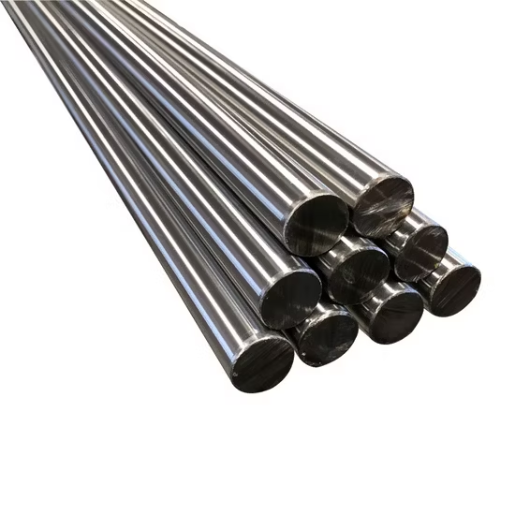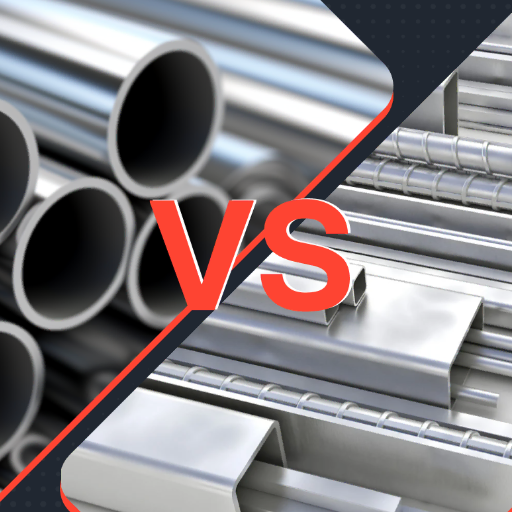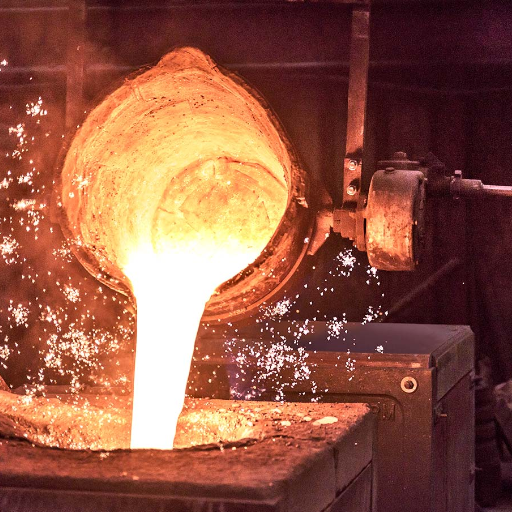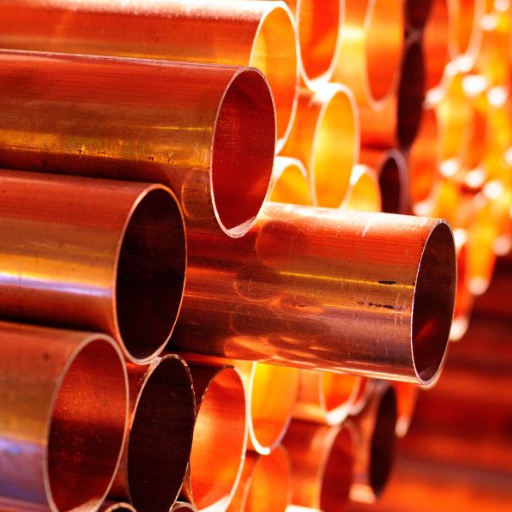Admirably, the 304 stainless steel flat bar is recognized globally for its strength, resistance to corrosion, and versatility which makes it a go-to material for many industries across the world. This blog post discusses the primary reasons why 304 stainless steel flat bars are preferred, their applications across various industries, and important factors that need to be considered during selection and use. This material’s reliability and adaptability make it an ideal solution for construction, manufacturing, and even fine detail works, therefore meeting endless operational and aesthetic expectations. By the end of this article, the audience is expected to have a robust understanding of various reasons why 304 stainless steel flat bars are the most preferred in meeting an array of technical and industrial requirements.
What is 304 Stainless Steel Flat Bar?

The 304 stainless steel flat bar is a versatile and durable product made out of 304 stainless steel which belongs to the austenitic stainless steel family. This steel has a balanced grade of chromium (around 18%) and nickel (about 8%), which provides it with exceptional corrosion resistance, strength, and weldability. Its rectangular shape allows it to be used in industries that require both structural and aesthetic elements to be blended. As a result of its low carbon content, the 304 stainless steel flat bar is oxidation-resistant and easy to fabricate, which makes it favorable in construction, automotive, food processing, and marine environments.
Understanding the Composition of 304 Stainless Steel
The composition of 304 stainless steel is defined by its unique elemental proportions which gives it exceptional performance and versatility. It usually contains between 18% to 20% chromium and 8% to 10.5% nickel. These two components provide corrosion resistance to most oxidizing acids and environments. Moreover, it comprises manganese of up to 2%, silicon of up to 0.75%, and carbon in a maximum concentration of 0.08%. The aforementioned elements serve to enhance mechanical properties and fabrication ease. It also contains phosphorus (maximum 0.045%) and sulfur (maximum 0.03%) which enhance structural consistency. For these reasons, 304 stainless steel remains non-magnetic, does not harden by heat treatment, and retains strength in cold working conditions. Therefore, 304 stainless steel is suitable for many severe industrial applications.
Key Features and Specifications
304 stainless steel is well known for its exceptional resistance to corrosion, high strength, and easy fabrication. This alloy is non-magnetic in its annealed state because it is an austenitic alloy. The material has extremely high oxidation and corrosion resistance in many environments, especially to acids and chloride compounds. The alloy has a tensile strength between 515MPa to 750MPa and a yield strength of about 205MPa. Its melting point is between 2,500F and 2,590F (1,370C to 1,420C) and therefore can be used in applications that require high temperatures.
304 stainless steel has great weldability and can be welded by many conventional welding processes. It is also compliant with the ASTM A240 and A276 standards which guarantee that the material will perform as intended. Its combined workability and versatility make the alloy extremely valuable in industrial applications such as the construction of food processing machinery, chemical tanks, and other architectural structures where strength and beauty are required.
Comparison with Other Metal Grades
The properties of 304 stainless steel are different from 316 and 430 stainless steel, which are other metal grades. These differences are important in meeting the requirements of particular applications. They both belong to austenitic grades with 316 having better resistance to corrosion than the former due to the presence of molybdenum especially in chloride-rich environments; thus, it is preferred in marine and chemical processing industries. Nevertheless, while still giving excellent corrosion resistance, 304 is more economical and hence widely used for general purposes such as kitchenware and architectural applications.
On the contrary, nickel content found in 304 and 316 is absent in ferritic grade called 430 stainless steel. It has a lower cost but lesser corrosion resistance because of this composition. It is used mostly in indoor settings where there’s little or no contact with moisture or chemicals like home appliances. Notwithstanding that ferritic structure makes it magnetic unlike its austenitic counterpart thus it may be relevant for some purposes (Czajkowski et al., 1996).
But at the end of it all, the choice between these grades is determined by how much money one wants to spend, how well corrosion resistant they would like their material to be, how workable or malleable it will be and in what type of environment it will be used. Although 304 stainless steel shows excellent performance in general, 316 performs better for more severe conditions while 430 provides a cheaper option for less critical applications.
Where Can You Find 304 Stainless Steel Flat Bar Stock?

304 stainless steel flat bar stock is easily available with several vendors on the internet as well as in storefronts. Like other metal products, 304 flat bars are readily available for purchase in a multitude of sizes at industrial metal distributors, local metal fabricators, and larger stainless steel suppliers. Platforms offer easy access to multiple vendors, allow inspection of detailed descriptions, and get price quotations for comparison with other vendors. Most importantly, the selected vendor must comply with the vendor industry regulations and be able to guarantee certification of materials supplied, especially when such materials are for precise and dependable applications.
Leading Bar Supplier Options
When searching for 304 stainless steel flat bar stock, three leading suppliers stand out based on availability, quality, and customer service:
- Online Metals
Online Metals offers a wide range of 304 stainless steel flat bar dimensions available for purchase directly through their website. They provide material certifications, custom-cutting services, and quick delivery options tailored to meet commercial and industrial requirements.
- Midwest Steel and Aluminum
Midwest Steel and Aluminum is recognized for its competitive pricing and extensive inventory, including 304 stainless steel bars. They emphasize quality assurance with mill certifications and support bulk purchasing for larger projects.
- Metal Supermarkets
Metal Supermarkets provides an extensive inventory of 304 stainless steel flat bars with options for same-day pickup or fast shipping. Known for their vast network of locations, they cater to local and international orders while maintaining rigorous standards for product accuracy and certification.
These suppliers provide reliable options for procuring 304 stainless steel flat bars and ensure adherence to industry standards while streamlining the purchasing process for both small-scale and bulk orders.
How to Contact Us for Purchases
We offer numerous ways to make inquiries or purchases on 304 stainless steel flat bars. For direct assistance, feel free to call us via phone at [Insert Phone Number]. You can also email us at [Insert Email Address] with your needs outlined. Orders can be made online on our website [Insert Website URL] where products are listed, and quotes can also be requested. Our specialists stand ready to help confirm the material details before the rapid processing of both large and small quantities for all clients. You can be certain that every product meets the desired quality and is provided with appropriate certificates.
Availability and Size Options
Our 304 stainless steel flat bars are available in a wide range of sizes to accommodate diverse application requirements. Standard thickness options range from 1/8 inch to 1 inch, with widths typically varying between 1 inch and 4 inches. Lengths are commonly offered in 12-foot increments; however, custom-cut lengths are available upon request to meet specific needs.
All bars are precision-finished to strict tolerances and are supplied in mill finish or polished options, depending on your preference. Additionally, our inventory is regularly updated to ensure consistent stock availability, making it easier to fulfill both small-scale and high-volume orders with short lead times. Contact us for further customization options or specific size requirements.
Why Choose 304 Stainless Steel for Your Project?

304 stainless steel is readily used in different industries due to its high strength, corrosion resistance, and durability. Its non-magnetic characteristics and ability to withstand oxidation make it ideal for construction, food processing, and chemical industries. This alloy also has great formability and weldability, providing ease of fabrication while preserving strength. In addition, 304 stainless steel is reliable in high and low temperatures, providing extended performance in tough conditions. Its cost-effectiveness and versatility further solidify its position as a preferred choice for projects requiring dependable, high-quality steel.
Advantages of Corrosion Resistance
The high corrosion resistance of 304 stainless steel is due to the high content of chromium (approximately 18-20%). The chromium forms a passive oxide which protects the surface from getting oxidized or engaged in chemical reactions even in highly atmospheres. It is very good at resisting rust and pitting in both wet and acidic environments which makes it useful for marine, food processing, and chemical industry equipment. Additionally, its remarkable resistance to oxidation at high temperatures guarantees protection and sustained performance, which lowers maintenance and replacement costs. This combination of features increases its cost-effectiveness in many complex industries.
Applications in Various Industry Sectors
304 stainless steel directly supports several industries due to its superior mechanical properties and corrosion resistance. Specifically, in the food and beverage industry, it is used for the construction of kitchen sinks, cookware, and food preparation equipment because it is clean and does not react with food. The marine industry uses it because it can withstand saline conditions; it is used for boat fittings, fasteners, and even underwater structures. In addition, 304 stainless steel is widely used in the chemical and petrochemical industries for building storage tanks, pipelines, and heat exchangers due to its ability to withstand corrosive chemicals and oxidation at elevated temperatures. Furthermore, it is also utilized in construction, automobile, and healthcare features due to its versatility as well as the ever-increasing demand for fabrication, strength, and durability in those fields. Such broad applicability makes it one of the most sought-after materials in virtually all industries.
The Role of Chromium and Nickel
The most important alloying components of 304 stainless steel are chromium and nickel, which determine the grade’s exceptional characteristics. Chromium, in the range of 18 – 20%, is vital for anodic protection; it allows for the formation of a passive oxide layer that protects the steel from corrosion and oxidation. This chromium content also enhances steel’s resistance to moisture as well as chemical compounds. Nickel, with a content of 8-10.5%, improves the strength and toughness of the alloy as well as its resistance to high and low temperatures. Furthermore, Nickel increases the ductility of the steel, making it easier to fabricate and form. Thus, the combination of these elements guarantees the effective performance of 304 stainless steel in demanding uses across different industries.
How Does 304 Stainless Steel Compare to Other Metal Options?

304 stainless steel shows clear advantages over other metals in terms of corrosion resistance, fabrication, and general use. Carbon steel is prone to rust and deterioration, while 304 stainless steel’s chromium composition gives it the ability to withstand moisture and other harsh chemicals. Although 304 stainless steel is denser and less lightweight than aluminum, it is also stronger and more durable at elevated temperatures. Additionally, 304 stainless steel is more cost-effective than other grades like 316 stainless steel which uses expensive alloys to provide enhanced resistance to some chemicals. 304 stainless steel’s cost-effectiveness, coupled with its not suffering significant degradation from general exposure to chlorides, acids, and other chemicals makes it the preferred option across a wide range of industries.
Differences Between 304 and 316 Stainless Steel
As a rule of thumb, the difference between 314 and 316 stainless steel is that grade 316 has the additional inclusion of molybdenum to the alloy. This additional metal increases grade 316 steel’s rank and ability to resist corrosion, especially from chlorides and marine environment which makes it best for applications dealing with saltwater or hostile penetrative environments.
Both grades exhibit excellent strength and resistance to oxidation, however, grade 304 stainless steel is of lower price and readily available for use in mild conditions compared to 316. 316 stainless steel is more commonly used in chemical processing, and in pharmaceutical and marine applications because of its resistance to pitting and crevice corrosion. Moreover, 3 stainless steel also has slightly higher tensile strength and performs better in extreme conditions, though this comes at the cost of a more expensive price tag.
In the end, the decision between 304 and 316 stainless steel rests on the specific requirements of the environment and budget directed toward the task.
Comparing Carbon and Aluminum
The characteristics of carbon and aluminum as materials differ greatly, which determines their usage. Carbon is best known for its usage in the aerospace and motorsports industries due to its carbon-fiber composites high strength-to-weight ratio. Additionally, it is utilized to manufacture advanced sporting equipment. It does have some limitations such as its high energy expenditure during production and fatigue resistance as well as being non-economical to recycle. But on the right hand, its rigidity and high fatigue resistance are tremendous plus points.
Aluminum is inexpensive, light, and has the added advantage of being highly ductile and able to resist corrosion. During the production of automotive, construction, and packing tools, alloys of aluminum are mostly preferred. Despite its low cost, aluminum is not very sturdy and cannot be compared against carbon composites and the industries carbon is used in, so in extreme conditions, it is not useful. But for industries and businesses that place a premium on being environmentally friendly, aluminum is the material of choice because it is non-detrimental to the world and helps in making tools, containers, and components which is sustainable.
In the end, whether carbon or aluminum is used disregards environmental factors and depends on the needed combination of strength, cost, and weight. The design is crucial in most areas whereas carbon is specialized in. On the other hand, versatility and price come with aluminum.
Understanding Oxidation and Resistance
Oxidation describes a chemical reaction in which a material reacts with oxygen resulting in the formation of an oxide layer. This process can be noticed in iron in the form of rusting. There exists a wide variation in the ability of a material to resist oxidation and it also depends on the chemical and structural composition of the substance. For example, aluminum develops a thin stable oxide coating that protects it from further corrosion making it very resistant in atmospheric conditions. Carbon materials, however, do not oxidize this way but can suffer from degradation under elevated temperatures or strong oxidizing agents.
The resistance of a material to oxidation plays a vital role in the materials working life and performance, particularly within the aerospace, automotive and construction industries. Elements such as chromium and nickel which are found in stainless steel and protective coated alloys give metals excellent resistance to oxidation. Knowing how materials behave during oxidation is very important in choosing the right material for the application in question and accomplishing an adequate compromise between durability, cost, and environmental factors.
How to Work with 304 Stainless Steel Flat Bars in Manufacturing?

When working with 304 stainless steel flat bars in manufacturing, it is essential to consider their properties and handling requirements to achieve optimal results. 304 stainless steel offers excellent corrosion resistance, formability, and weldability, making it highly versatile across various applications. During machining, it is important to use low cutting speeds and sharp cutting tools to minimize work hardening, which is a characteristic of this steel grade. Proper lubrication or coolant is also crucial to prevent tool wear and ensure smooth operations.
For welding, 304 stainless steel exhibits strong performance but requires adherence to recommended techniques, such as utilizing proper filler materials (e.g., 308 or 316). Heat input should be controlled to reduce carbide precipitation, which can otherwise compromise corrosion resistance. Post-weld cleaning, such as pickling or passivation, restores the surface and enhances its resistance to oxidation. To maintain dimensional accuracy and surface quality, avoid cross-contamination by using dedicated tools and clean work areas free from carbon steel particles.
Techniques for Cut-to-Size Precision
When working with 304 stainless steel flat bars, achieving precise cuts is essential to maintaining the material’s integrity and ensuring exact specifications for the application. Several cutting techniques are commonly employed:
- Laser Cutting
Laser cutting offers exceptional accuracy and clean edges, making it ideal for projects requiring high precision. Its non-contact nature minimizes thermal distortion, preserving the material’s mechanical properties. This method is particularly suited for complex or intricate designs.
- Plasma Cutting
Plasma cutting is efficient for thicker stainless steel bars. It employs electrically conductive gas to produce a high-temperature plasma arc, resulting in a clean cut. While less precise than laser cutting, it is faster and cost-effective for less demanding tolerances.
- Water Jet Cutting
Using high-pressure water mixed with abrasive particles, water jet cutting is a versatile method that avoids heat-affected zones, preventing warping or material property changes. It is especially useful for cutting large or delicate components without any thermal influence.
- Mechanical Sawing
Band saws and circular saws are traditional methods for cutting 304 stainless steel flat bars. Equipped with proper blade materials and speeds, they deliver reliable and consistent cuts. This technique is typically used for less precise applications or initial stock cutting.
Each approach must consider the thickness of the material, the desired precision, and cost constraints. Proper tooling and post-processing, including deburring, may be necessary to ensure the final product meets the required standards.
The Process of Anneal and Cold Working
Similar to tempering, hot working is very effective in working on the metal properties for the desired mechanical features. Working cold is performed with the deformation of metals above their recrystallization temperature, typically achieved by rolling, pressing, or drawing. Cold working increases the strength and the hardness of the metal while decreasing the ductility of the material, due to strain hardening. Combining these two processes, manufacturers can enhance the balance between strength and workability which in return makes the material more efficient for its intended application, for example in construction, machinery, or aerospace work. Annealing, unlike tempering, is a heat treatment in which a metal is heated to a certain temperature and then cooled down. Annealing relieves internal stresses, and magnesium ductility, refines the grain structure, and as a result, makes the material softer and more workable.
Ensuring Quality with ASTM A276 Standards
Aside from the implementation of the standard, the ASTM A276 specification is meant to provide comprehensive guidelines concerning stainless steel and heat-resisting steel bars for various industries. It also places requirements for hot-finished or cold-finished bars in several forms like rounds, squares, hexagons, and other sections. As a result, this standard ensures material quality and uniformity when it comes to machining, forming, or construction of the deemed steel bars under corrosive conditions.
Some of the key technical aspects of ASTM A276 are its requirements that cover many mechanical properties such as tensile strength, yield strength, and elongation which differ with the grade of steel classification and application. There also were set on what are the acceptable chemical compositions for the different grades of steel that would provide the material with adequate corrosion resistance and fabricability. To guarantee compliance and performance reliability of the material, strict testing procedures like hardness testing and grain size analysis frequently needed to be performed.
The adoption of the ASTM A276 standards enables the designers and manufacturers to be assured that the materials to be used in the fabrication of the components will have the desired properties which in turn will be able to withstand the rigorous operating conditions. It is because of this that it is of utmost importance as a benchmark within the construction, automotive, aerospace, and chemical processing.
References
Frequently Asked Questions (FAQ)
Q: What is a 304 Stainless Steel Flat Bar?
A: A 304 Stainless Steel Flat Bar is a versatile and durable metal product used in various applications due to its excellent corrosion resistance and mechanical properties. It is often used in construction, manufacturing, and the food and beverage industry.
Q: How is the thickness of a flat stock measured?
A: The thickness of a flat stock is measured in millimeters or inches, depending on the specific requirements. It is crucial to determine the correct thickness to ensure the flat bar meets your metal needs.
Q: Can a 304 Stainless Steel Flat Bar be welded?
A: Yes, a 304 Stainless Steel Flat Bar can be welded using appropriate techniques. This steel alloy is known for its good weldability, making it suitable for various construction and machinery applications.
Q: What are the typical dimensions available for a stainless flat bar?
A: A stainless flat bar is available in various dimensions, including different widths and thicknesses, to meet diverse project requirements. Custom sizes can often be ordered to fit specific needs.
Q: How does the shear strength of 304 stainless steel compare to other materials?
A: 304 stainless steel possesses excellent shear strength, making it one of the most versatile materials for applications requiring high durability and resistance to deformation.
Q: What are the benefits of using a true bar versus a metal sheet?
A: A true bar provides uniform thickness and consistent mechanical properties throughout, making it ideal for precision applications. In contrast, a metal sheet may vary in thickness and is more suitable for less demanding applications.
Q: Why is 304 Stainless Steel considered non-magnetic?
A: 304 Stainless Steel is generally considered non-magnetic due to its high nickel and chromium content, which alters its magnetic properties. However, slight magnetism may occur after cold working.
Q: Is 304 Stainless Steel Flat Bar suitable for food and beverage industry applications?
A: Yes, the 304 Stainless Steel Flat Bar is ideal for food and beverage industry applications due to its excellent corrosion resistance and ability to withstand harsh cleaning processes without degrading.
Q: What makes 304 Stainless Steel a high-quality choice for brackets?
A: 304 Stainless Steel is a high-quality choice for brackets due to its durability, excellent corrosion resistance, and mechanical properties, ensuring long-lasting performance in various environments.







